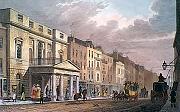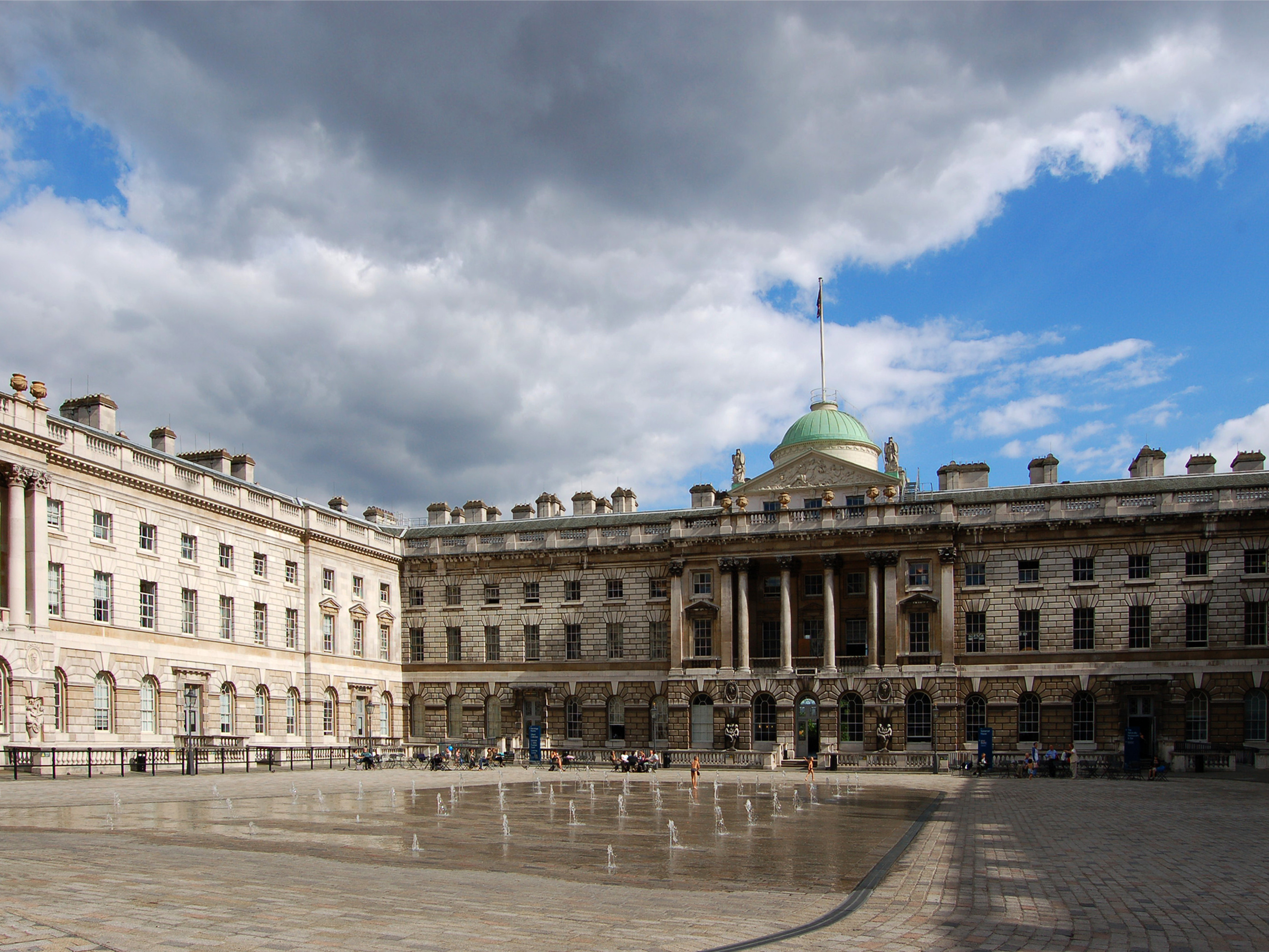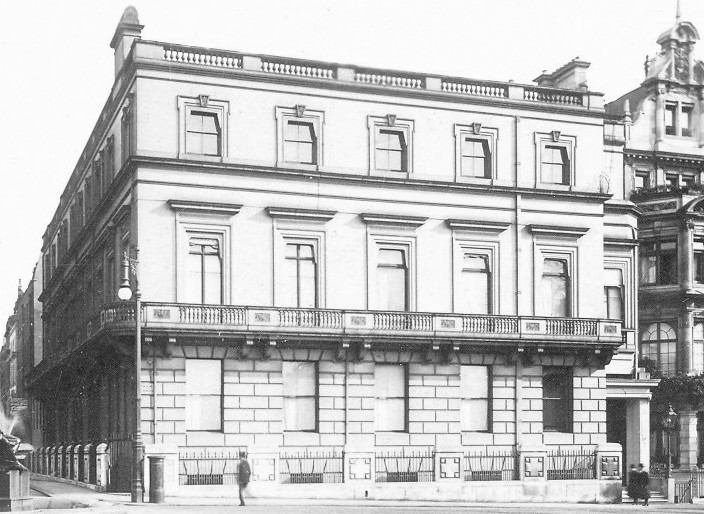|
Joseph Damer, 1st Earl Of Dorchester
Joseph Damer, 1st Earl of Dorchester (12 March 1718 – 12 January 1798) was a country landowner and politician who sat in the House of Commons from 1741 to 1762 when he was raised to the peerage as Baron Milton. He was particularly associated with the reshaping of Milton Abbey and the creation of the village of Milton Abbas in Dorset, south-west England. Early life Damer was the eldest son of Joseph Damer MP of Winterbourne Came, and his wife Mary Churchill, daughter of John Churchill of Henbury, Dorset. He was from a wealthy family and his great-uncle was a money-lender in Ireland. He was baptised at the Holy Trinity Church, Dorchester and educated at Trinity College, Dublin in 1734–5. He married Lady Caroline Sackville, daughter of the 1st Duke of Dorset on 27 July 1742. Political career Damer was returned as Member of Parliament (MP) for Weymouth in the 1741 general election at the age of 22. He was then returned for Bramber in the 1747 general election and Dorchest ... [...More Info...] [...Related Items...] OR: [Wikipedia] [Google] [Baidu] |
House Of Commons
The House of Commons is the name for the elected lower house of the bicameral parliaments of the United Kingdom and Canada. In both of these countries, the Commons holds much more legislative power than the nominally upper house of parliament. The leader of the majority party in the House of Commons by convention becomes the prime minister. Other parliaments have also had a lower house called a "House of Commons". History and naming The House of Commons of the Kingdom of England evolved from an undivided parliament to serve as the voice of the tax-paying subjects of the counties and of the boroughs. Knights of the shire, elected from each county, were usually landowners, while the borough members were often from the merchant classes. These members represented subjects of the Crown who were not Lords Temporal or Spiritual, who themselves sat in the House of Lords. The House of Commons gained its name because it represented communities (''communes''). Since the 19th century, ... [...More Info...] [...Related Items...] OR: [Wikipedia] [Google] [Baidu] |
1754 British General Election
The 1754 British general election returned members to serve in the House of Commons of the 11th Parliament of Great Britain to be summoned, after the merger of the Parliament of England and the Parliament of Scotland in 1707. Owing to the extensive corruption and the Duke of Newcastle's personal influence in the pocket boroughs, the government was returned to office with a working majority. The old parties had disappeared almost completely by this stage; anyone with reasonable hopes of achieving office called himself a 'Whig', although the term had lost most of its original meaning. While 'Tory' and 'Whig' were still used to refer to particular political leanings and tendencies, parties in the old sense were no longer relevant except in a small minority of constituencies, such as Oxfordshire, with most elections being fought on local issues and the holders of political power being determined by the shifting allegiance of factions and aristocratic families rather than the strengt ... [...More Info...] [...Related Items...] OR: [Wikipedia] [Google] [Baidu] |
Milton, Dorset
The former town of Milton (or Middleton) in Dorset, England was cleared by the local landowner, Joseph Damer, Lord Milton, in the 1770s. This was a result of a fashion amongst English landowners to improve the amenity of their homes by converting surrounding farmland into open parkland. Where buildings were deemed to spoil the view, they were removed, including villages and towns, as in the case of Milton. Damer's former residence, Milton Abbey, is now occupied by Milton Abbey School. History A church, dedicated to Saint Sampson, was founded at Milton in the reign of King Athelstan (who also granted an annual fair). It was said to be a gesture of atonement for the death of the King's brother, Edwin, in 933 and it was endowed with relics. In 964, the church was handed over to the Benedictines and a monastery was established there until 11 March 1539, when closed during the general Dissolution of the Monasteries by Henry VIII. Henry subsequently sold the estate to John Tregon ... [...More Info...] [...Related Items...] OR: [Wikipedia] [Google] [Baidu] |
Milton Abbas 2015 (a)
Milton may refer to: Names * Milton (surname), a surname (and list of people with that surname) ** John Milton (1608–1674), English poet * Milton (given name) ** Milton Friedman (1912–2006), Nobel laureate in Economics, author of '' Free to Choose'' Places Australia * Milton, New South Wales * Milton, Queensland, a suburb of Brisbane ** Milton Courts, a tennis centre ** Milton House, Milton, a heritage-listed house ** Milton railway station, Brisbane ** Milton Reach, a reach of the Brisbane River ** Milton Road, an arterial road in Brisbane Canada * Milton, Newfoundland and Labrador * Milton, Nova Scotia in the Region of Queens Municipality * Milton, Ontario ** Milton line, a commuter train line ** Milton GO Station * Milton (electoral district), Ontario ** Milton (provincial electoral district), Ontario * Beaverton, Ontario a community in Durham Region and renamed as Beaverton in 1835 * Rural Municipality of Milton No. 292, Saskatchewan New Zealand * Milton, Ne ... [...More Info...] [...Related Items...] OR: [Wikipedia] [Google] [Baidu] |
Capability Brown
Lancelot Brown (born c. 1715–16, baptised 30 August 1716 – 6 February 1783), more commonly known as Capability Brown, was an English gardener and landscape architect, who remains the most famous figure in the history of the English landscape garden style. He is remembered as "the last of the great English 18th-century artists to be accorded his due" and "England's greatest gardener". Unlike other architects including William Kent, he was a hands-on gardener and provided his clients with a full turnkey service, designing the gardens and park, and then managing their landscaping and planting. He is most famous for the landscaped parks of English country houses, many of which have survived reasonably intact. However, he also included in his plans "pleasure gardens" with flower gardens and the new shrubberies, usually placed where they would not obstruct the views across the park of and from the main facades of the house. Few of his plantings of "pleasure gardens" have s ... [...More Info...] [...Related Items...] OR: [Wikipedia] [Google] [Baidu] |
Landscape Gardener
Landscape architecture is the design of outdoor areas, landmarks, and structures to achieve environmental, social-behavioural, or aesthetic outcomes. It involves the systematic design and general engineering of various structures for construction and human use, investigation of existing social, ecological, and soil conditions and processes in the landscape, and the design of other interventions that will produce desired outcomes. The scope of the profession is broad and can be subdivided into several sub-categories including professional or licensed landscape architects who are regulated by governmental agencies and possess the expertise to design a wide range of structures and landforms for human use; landscape design which is not a licensed profession; site planning; stormwater management; erosion control; environmental restoration; parks, recreation and urban planning; visual resource management; green infrastructure planning and provision; and private estate and residence l ... [...More Info...] [...Related Items...] OR: [Wikipedia] [Google] [Baidu] |
James Wyatt
James Wyatt (3 August 1746 – 4 September 1813) was an English architect, a rival of Robert Adam in the neoclassical and neo-Gothic styles. He was elected to the Royal Academy in 1785 and was its president from 1805 to 1806. Early life Wyatt was born on 3 August 1746 at Weeford, near Lichfield, Staffordshire, England. Early classical career Wyatt spent six years in Italy, 1762–68, in company with Richard Bagot of Staffordshire, who was Secretary to the Earl of Northampton's embassy to the Venetian Republic. In Venice, Wyatt studied with Antonio Visentini (1688–1782) as an architectural draughtsman and painter. In Rome he made measured drawings of the dome of St. Peter's Basilica, "being under the necessity of lying on his back on a ladder slung horizontally, without cradle or side-rail, over a frightful void of 300 feet". Back in England, his selection as architect of the proposed Pantheon or "Winter Ranelagh" in Oxford Street, London, brought him almost unparalleled ... [...More Info...] [...Related Items...] OR: [Wikipedia] [Google] [Baidu] |
William Chambers (architect)
__NOTOC__ Sir William Chambers (23 February 1723 – 10 March 1796) was a Swedish-Scottish architect, based in London. Among his best-known works are Somerset House, and the pagoda at Kew. Chambers was a founder member of the Royal Academy. Biography William Chambers was born on 23 February 1723 in Gothenburg, Sweden, to a Scottish merchant father. Between 1740 and 1749 he was employed by the Swedish East India Company making three voyages to China where he studied Chinese architecture and decoration. Returning to Europe, he studied architecture in Paris (with J. F. Blondel) and spent five years in Italy. Then, in 1755, he moved to London, where he established an architectural practice. In 1757, through a recommendation of Lord Bute, he was appointed architectural tutor to the Prince of Wales, later George III, and in 1766 also, along with Robert Adam, Architect to the King, (this being an unofficial title, rather than an actual salaried post with the Office of Works). He wo ... [...More Info...] [...Related Items...] OR: [Wikipedia] [Google] [Baidu] |
Park Lane (road)
Park Lane is a dual carriageway road in the City of Westminster in Central London. It is part of the London Inner Ring Road and runs from Hyde Park Corner in the south to Marble Arch in the north. It separates Hyde Park, London, Hyde Park to the west from Mayfair to the east. The road has a number of historically important properties and hotels and has been one of the most sought after streets in London, despite being a major traffic thoroughfare. The road was originally a simple country lane on the boundary of Hyde Park, separated by a brick wall. Aristocratic properties appeared during the late 18th century, including Breadalbane House, Somerset House, Park Lane, Somerset House, and Londonderry House. The road grew in popularity during the 19th century after improvements to Hyde Park Corner and more affordable views of the park, which attracted the nouveau riche to the street and led to it becoming one of the most fashionable roads to live on in London. Notable residents in ... [...More Info...] [...Related Items...] OR: [Wikipedia] [Google] [Baidu] |
London
London is the capital and largest city of England and the United Kingdom, with a population of just under 9 million. It stands on the River Thames in south-east England at the head of a estuary down to the North Sea, and has been a major settlement for two millennia. The City of London, its ancient core and financial centre, was founded by the Romans as '' Londinium'' and retains its medieval boundaries.See also: Independent city § National capitals The City of Westminster, to the west of the City of London, has for centuries hosted the national government and parliament. Since the 19th century, the name "London" has also referred to the metropolis around this core, historically split between the counties of Middlesex, Essex, Surrey, Kent, and Hertfordshire, which largely comprises Greater London, governed by the Greater London Authority.The Greater London Authority consists of the Mayor of London and the London Assembly. The London Mayor is distinguished fr ... [...More Info...] [...Related Items...] OR: [Wikipedia] [Google] [Baidu] |
John Vardy
John Vardy (February 1718 – 17 May 1765) was an English architect attached to the Royal Office of Works from 1736. He was a close follower of the neo-Palladian architect William Kent. John Vardy was born to a simple working family in Durham. His early training is obscure. His career at the Office of Works, which demanded most of his attention throughout his life, began in May 1736, when he was appointed Clerk of the Works at Greenwich Hospital. He was Clerk of the Works at Hampton Court Palace, January 1745 to 1746; Clerk of the Works at Whitehall, Palace of Westminster and St James's Palace, December 1746 to 1754; Kensington Palace, July 1754 to 1761. He also served as Clerk of the Works at Chelsea Hospital and as Surveyor to the Mint. Vardy and William Kent His relations with William Kent, his senior at the Board of Works, began about 1736 and remained close. Vardy prepared for publication the classic of the Palladian revival, ''Some Designs of Mr. Inigo Jones and Mr. Willia ... [...More Info...] [...Related Items...] OR: [Wikipedia] [Google] [Baidu] |
Architect
An architect is a person who plans, designs and oversees the construction of buildings. To practice architecture means to provide services in connection with the design of buildings and the space within the site surrounding the buildings that have human occupancy or use as their principal purpose. Etymologically, the term architect derives from the Latin ''architectus'', which derives from the Greek (''arkhi-'', chief + ''tekton'', builder), i.e., chief builder. The professional requirements for architects vary from place to place. An architect's decisions affect public safety, and thus the architect must undergo specialized training consisting of advanced education and a ''practicum'' (or internship) for practical experience to earn a Occupational licensing, license to practice architecture. Practical, technical, and academic requirements for becoming an architect vary by jurisdiction, though the formal study of architecture in academic institutions has played a pivotal role in ... [...More Info...] [...Related Items...] OR: [Wikipedia] [Google] [Baidu] |






